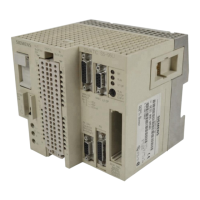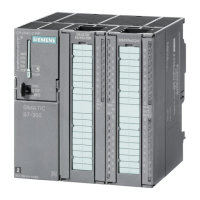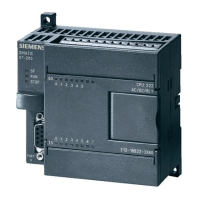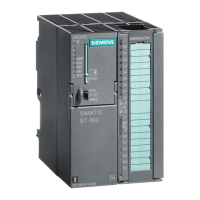R 02/92
Matching Module 4 for Absolute Encoders
7.3.5 Instructions for Encoder Connections
The encoders are connected to the 50–way sub D connector of the basic module via a cable with
twisted pair conductors, according to
RS
422/RS
485 specifications. The encoders can be either
connected to the input interface
“optocoupler”(
i.e., a current loop with approx. 7 mA, or to the
input interface “receiver” (set switch S2 accordingly)),
– In case of operation via the
optocoupler:
The encoder is supplied via the encoder matching
module.With
the jumpers A– B
and C–D on the basic module, and the grounding connection with the program-
mable controller, only non-floating operation is possible.
For floating operation, a separate encoder supply is required, galvanically iso-
lated (i.e., without connection to the S5).
– In case of operation via the receiver:
The value of the terminating resistor R2 can be adapted to the wave resistance Zo
(see the data sheet of the respective encoder manufacturer) of the cable used.
Floating operation is not possible.
Zo = R2 see
RS
485 specifications. The factory setting for Zo = R2 =100
S2
Maximum cable lengths:
The maximum cable length depends on the transfer frequency.
Encoder resolution
g
10 bits -t transfer frequency=100
kHz
~
max. cable length 300 m
Encoder resolution
>10
bits
~
transfer frequency
=
200
kHz
-+
max. cable length 150 m
Circuiting of the sense outputs
1P
241
Encoder with
sen-
with sense
SENSE +
se inputs
outputs
SENSE –
SENSE –
1
LOOP IN
LOOP OUT
etc.
A circuiting of the sense outputs with a suitable encoder is required here or the
sense(+) and sense(–) outputs must be left open. Do not connect sense(+) and
sense 1 to ground or the encoder power supply since these voltages can other-
wise increase (up to 18 V).
1P
241 Equipment Manual
@
SiemeflS
AG 1989, Order No.: 6ES5 998-0KD21
7 – 11
Artisan Technology Group - Quality Instrumentation ... Guaranteed | (888) 88-SOURCE | www.artisantg.com

